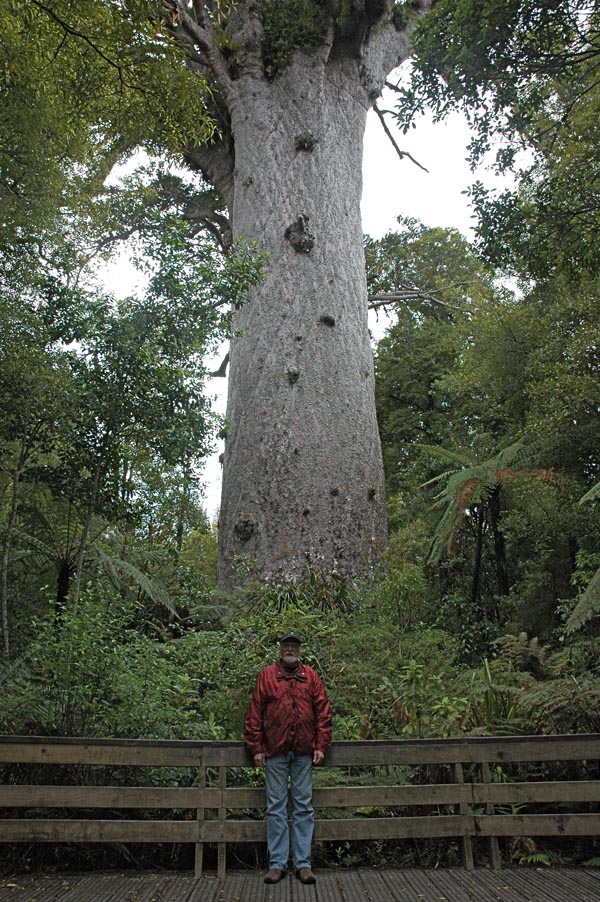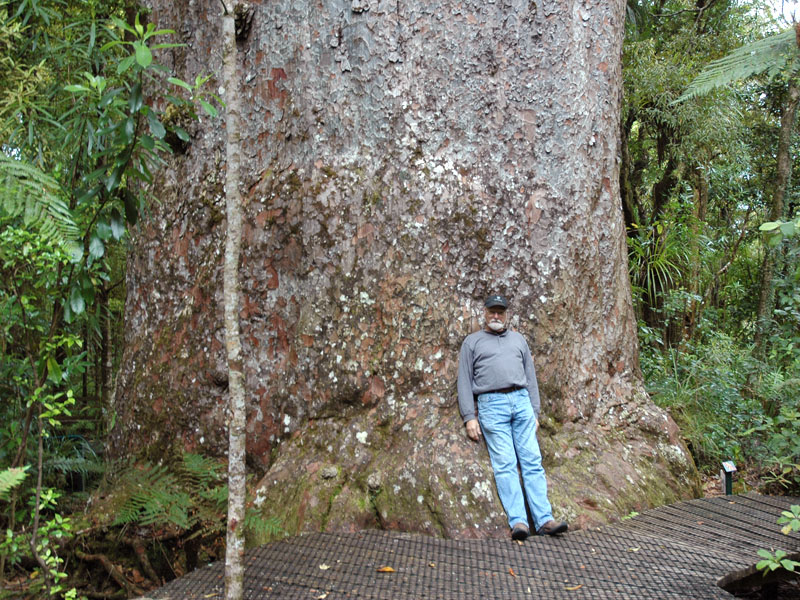| Propagation | Cultivate via seed, or cuttings from leading or erect epicormic shoots. |
| Notable Specimens | The largest of the genus named Tane Mahuta is found growing in the Waipoua Forest on the northern tip of the North Island of New Zealand. Tane Mahuta has a circumference of 13.71 m, a height of 51.51 m, and a volume of 2631.9 cubic metres. Tane Mahuta is estimated to be over 2100 years old, and begins branching some 17.98 m from the ground. |
| Habitat | Marginally temperate compared to other species of Agathis, surviving on the lowlands at the north end of the North Island, New Zealand. |
| Bark/Stem Description | Bark is grey suffused purple with whorled branches. |
| Leaf Description | Leaves are dimorphic, being 10 x 1 cm and glaucous green on young trees and 6 x 1.5 cm with an obtuse apex on mature trees. |
| Fruit Description | Male cones are cylindric, to 6 x 1 cm, while female cones are subglobose, to 6 x 8 cm and woody. Seeds are beige with wings to 1.5 cm wide. |

